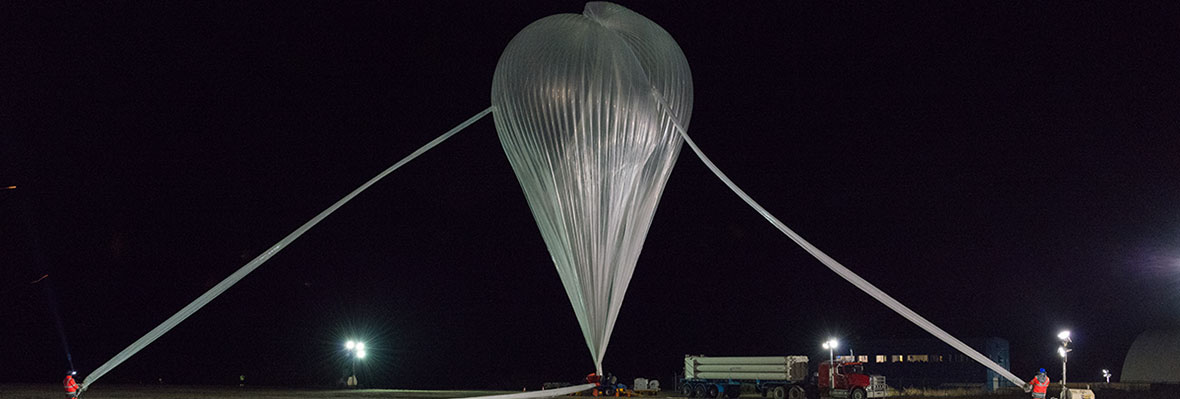AUSTRAL 2017 STRATOS campaign
On , six Canadian payloads flew on a stratospheric balloon from Alice Springs, Australia. The balloon performed a 10-hour mission at an altitude of 36 km. After being tested, the Aerosol Limb Imager tool V2 and the Imaging Fabry-Pérot Spectrometer instrument are now available for future satellite missions.
Payload technical descriptions
Aerosol Limb Imager Version 2 (ALI V2)
ALI V2 is an atmospheric monitoring tool that can measure the concentration of aerosols—tiny dispersed particles—in the upper atmosphere using a unique optical device. The instrument is an improved version of a prototype designed and constructed by the University of Saskatchewan that was successfully deployed on a stratospheric balloon in . The upgraded version of ALI can detect a wider range of optical wavelengths, allowing it to more precisely measure the size of aerosol particles. Aerosols play an important role in climate change by scattering sunlight away from the Earth.
- Developed by:
- University of Saskatchewan
Imaging Fabry-Pérot Spectrometer (IFPS)
This instrument is an improved version of a technology that was successfully tested on a stratospheric balloon in . It allowed the team to test the modifications made to the filter, actuators and optics in order to improve the performance of the imager for future space missions. The objectives were to obtain accurate, detailed, simultaneous, and collocated high-resolution measurements of molecular oxygen in the 20–40 km altitude range; and to simultaneously retrieve information on surface pressure, aerosols, and surface albedo from the measurements.
- Developed by:
- York University and MPB Communications Inc
Optical Particle Counters (OPC) Package
The OPC package aimed to sample the stratospheric air from the balloon platform and measure aerosol size and concentration. The package consisted of a suite of three existing OPC instruments: Condensation Nuclei Counter, Wyoming OPC, and New OPC. The objectives were to provide validation of satellite limb scattering observations, enable synergistic and corroborative aerosol measurements for use with the Aerosol Limb Imager (ALI) measurements, and contribute to the scientific record of in-situ size-resolved stratospheric aerosol measurements to further understanding of volcanic influence and aerosol formation and transport.
- Developed by:
- University of Saskatchewan
- Collaborators:
- University of Colorado and University of Wyoming.
GPS and Data Logger Breadboard
The goal of this multi-purpose electronics box was to record and provide the location and attitude of the gondola during the entire flight. In addition, the instrument monitored, through various sensors, the health of other components onboard the gondola. It included an onboard storage capacity for telemetry data and two high-definition cameras. This instrument was an improved version of a technology developed by a group of students from École de technologie supérieure, which was successfully tested on a stratospheric balloon in . Further development was carried out by the CSA.
- Developed by:
- CSA and École de technologie supérieure
Power Subsystem Breadboard
This modular subsystem consisted of a set of Li-ion batteries and a power distribution unit. It was developed by the CSA for STRATOS flights to provide required power to payloads.
- Developed by:
- CSA
RumbleSat Art Package
As part of the RumbleSat Art in Space Mission, the first RumbleSat I mission payload consisted of 64 small works of art. After it returns to Earth, it began a cross-Canada tour on , as part of the 150 Artists Celebrating Canada 150: the RumbleSat Art from the Edge of Space Exhibition.
- Developed by:
- University of Toronto
Contact
Should you have any questions regarding the STRATOS program, contact us at stratos_administration@asc-csa.gc.ca.
